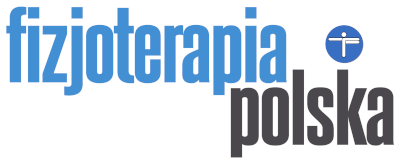N. Shazia Neelam, H.Manjunatha, P. Senthil, Saina Swathi,P. Antony Leo Aseer, K.C. Gayathri
N. Shazia Neelam, H.Manjunatha, P. Senthil, Saina Swathi,P. Antony Leo Aseer, K.C. Gayathri – Effectiveness of moderate to vigorous physical activity among stroke risk predicted population. A pilot study – Fizjoterapia Polska 2024; 24(1); 105-113
DOI: https://doi.org/10.56984/8ZG2EF80LR
Santrauka
Fonas. Didėjantis insulto paplitimas, ypač tarp jaunesnių populiacijų šalyse, pavyzdžiui, Indijoje, reikalauja efektyvių prevencinių strategijų. Tokių keičiamų rizikos veiksnių kaip aukštas kraujo spaudimas, diabetas ir rūkymas, labai prisideda prie insulto atvejų skaičiaus. Šis tyrimas sutelkia dėmesį į 12 savaičių vidutinio iki didelio intensyvumo fizinio aktyvumo (MVPA) programos įgyvendinimą, siekiant spręsti šiuos rizikos veiksnius ir sumažinti insulto atvejų skaičių.
Metodologija. Tyrimas apėmė struktūrizuotą MVPA intervenciją tarp asmenų, kuriems gresia insulto rizika, pabrėžiant nuoseklų protokolo laikymąsi. Pagrindiniai rezultatai, įskaitant sistolinį kraujospūdį, gliukozės kiekį kraujyje nevalgius ir bendrą cholesterolio kiekį, buvo stebimi. Širdies ir kraujagyslių sveikatos pagerėjimas buvo įvertintas naudojant Cooperio bėgimo testą. Tyrimas taip pat išnagrinėjo MVPA intervencijos įgyvendinimo galimybes ir priimtinumą, remdamasis dalyvių laikymusi nurodymų.
Rezultatai. MVPA grupė pademonstravo reikšmingą sistolinio kraujospūdžio, gliukozės kiekio kraujyje nevalgius ir bendro cholesterolio kiekio sumažėjimą, palyginti su kontrolinė grupe. Šie rezultatai pabrėžia MVPA veiksmingumą valdant pagrindinius insulto rizikos veiksnius. Be to, dalyviai parodė pagerėjusią širdies ir kraujagyslių ištvermę, išryškinant programos teigiamą poveikį bendrai širdies ir kraujagyslių sveikatai. Aukštas MVPA grupės laikymasis nurodymų rodė struktūrizuotų mankštų protokolų įgyvendinimo asmenims, kuriems gresia insulto rizika, galimybę.
Išvada. Šis pilotinis tyrimas demonstruoja 12 savaičių MVPA programos veiksmingumą mažinant pagrindinius insulto rizikos veiksnius ir gerinant širdies ir kraujagyslių sveikatą tarp asmenų, kuriems gresia insulto rizika. Rezultatai pabrėžia struktūrizuotų mankštų intervencijų svarbą insulto prevencijos pastangose. Nors perspektyvūs, reikalingi tolesni tyrimai su didesniais imčių dydžiais ir ilgesniu trukme, kad būtų įtvirtintos tokio pobūdžio intervencijų tvarios naudos ir įgyvendinamumas. Taikant pritaikytas MVPA programas yra didelis potencialas mažinti insulto riziką, suteikiant vertingų įžvalg potencialas mažinti insulto riziką, suteikiant vertingų įžvalgų pasauliniams insulto prevencijos strategijoms.
Raktiniai žodžiai:
insultas, MVPA, insulto rizikos veiksniai, fizinis aktyvumas

